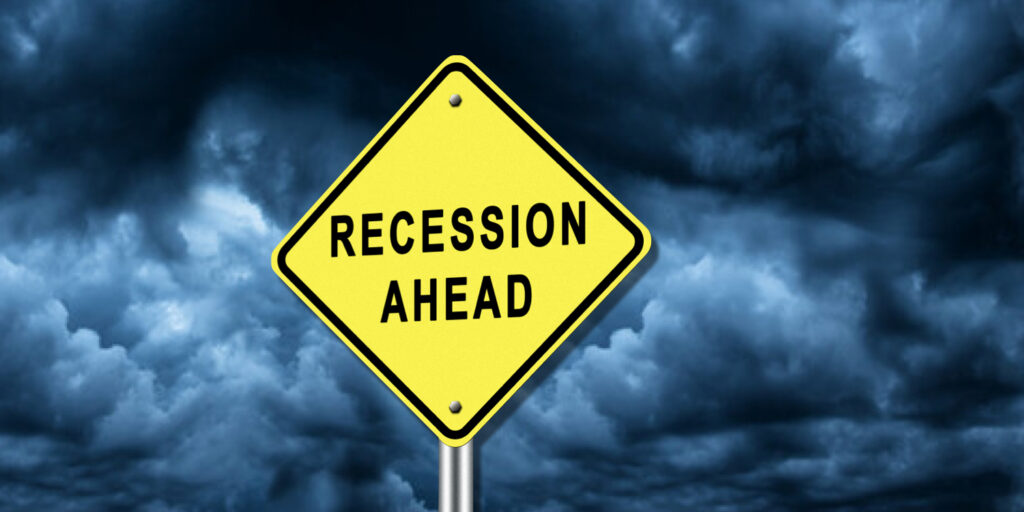Is a recession imminent and will it drive more homeowners to consider a reverse mortgage? Before we tackle that topic first let’s examine some recent economic history. Over the duration of the pandemic Americans socked away a considerable amount of savings. However, that savings will likely be gone by the end of this year according to research from the Federal Reserve Bank of San Francisco.
Americans’ personal savings rate as measured by the percentage of one’s disposable income saved was 9.1% in January of 2020. By April 2020 that number soared to 33.8% thanks to stimulus payments, mortgage and rent forbearance programs, and generous unemployment benefit payouts. By November 2020 the index fell to 13.3% until it rebounded to 26.3% in March 2021 thanks to a third round of stimulus payouts from the American Rescue Plan Act. The aggregate amount of dollars saved follows a nearly identical track.
A Recession postponed
Fortune-com reports excess savings accumulated during the pandemic helped defy the expectations of a looming recession as consumer spending bolstered the economy. However, with nearly 90% of the savings having been spent and credit card balances soaring consumers are ill-prepared for an economic downturn. That’s especially true for Older Americans on a fixed income who no longer can finance their expenditures on their credit cards. What’s not reported is the hedge older homeowners have; an estimated $12.7 trillion in home equity ‘savings’ held by those 62 and older.
Credit card debt hits new high
Credit card delinquencies typically surge during a recession. For example, in the years leading up to and during the housing and economic crisis of 2008 credit card delinquencies shot up from 3.54% to 6.77% in the second quarter of 2009. The number of Americans defaulting on their credit cards fell steeply as consumer spending slowed and the economy clawed its way out of the recession. Yet as consumers spent the last of their stimulus savings credit card balances and delinquencies are trending in the wrong direction.
How likely are we to see a recession in 2024?
[read more]
Business Insider reports that Deutsche Bank analyzed economic data from the 1700s to the present and found four indicators of an impending recession, and the fourth one was just triggered. Insider reports Jim Reid, the head of global economics and thematic research at Deutsche Bank presented his analysis of 323 years of economic data from the world’s largest economies. When compared to the other G7 nations, the US has had a more consistent cycle of economic booms and busts than its peers but also has produced greater overall economic growth. Reid argues that recessions are actually good for the economy in essence trimming off the nonproductive and bloated parts of production. Despite this, most governments have gone to great lengths to avoid a recession at all costs- even if it produces a deeper downturn.
Five signs of an impending recession
Here are the five indicators of an upcoming recession occurring within 12 months of any three-year period. According to Reid of which we’ve already seen four and the fifth just came to pass. The first is inflation increasing by three percentage points in a rolling 24-month period. Check. The second sign is the inversion of the yield curve when short-term debt instruments have higher yields than long-term ones with the same credit risk. The third sign of an impending recession is short-term interest rate hikes exceeding 1.55% of the previous period. Reid wrote. “77% of the time US inflation has risen by more than 3% points over 24 months there has been a subsequent recession.”The fourth indicator is oil prices increasing by 25% or more in a 12-month period. And the fifth indicator of an impending recession is quantitative tightening and interest rate hikes in a nation’s central bank.
With 80% of all U.S. dollars in circulation being printed since January 2020 and inflation persisting despite the Federal Reserve’s interest rate hikes- a recession seems more likely and perhaps the correction to an over-bloated and debt-ridden economy that’s sorely out of balance.
In conclusion, Americans’ pandemic savings may be nearly exhausted but their home equity is not. And that’s good news for older homeowners. Will it drive up demand for reverse mortgages? That’s uncertain, however, the increased need for additional cash flow during these uncertain economic times is beyond question.
[/read]







3 Comments
This is a repeat of the economic cycle we had in the 70’s recession ,stag flatiron and stock market downturns.
Ed- I think you may be correct unfortuately.
https://hecmworld.com/reverse-mortgage-news/stagflation-recession-retirement-home-equity/
We saw it in the 70s (as stated above), when the Prime Rate hit 22% then exploded in the 80s. We say it again in 2008. In each case, the bottom fishers (FHA/DPA) did well. I think the Reverse is prime for a wild ride! Yippee-ki-yo-ki-yay!